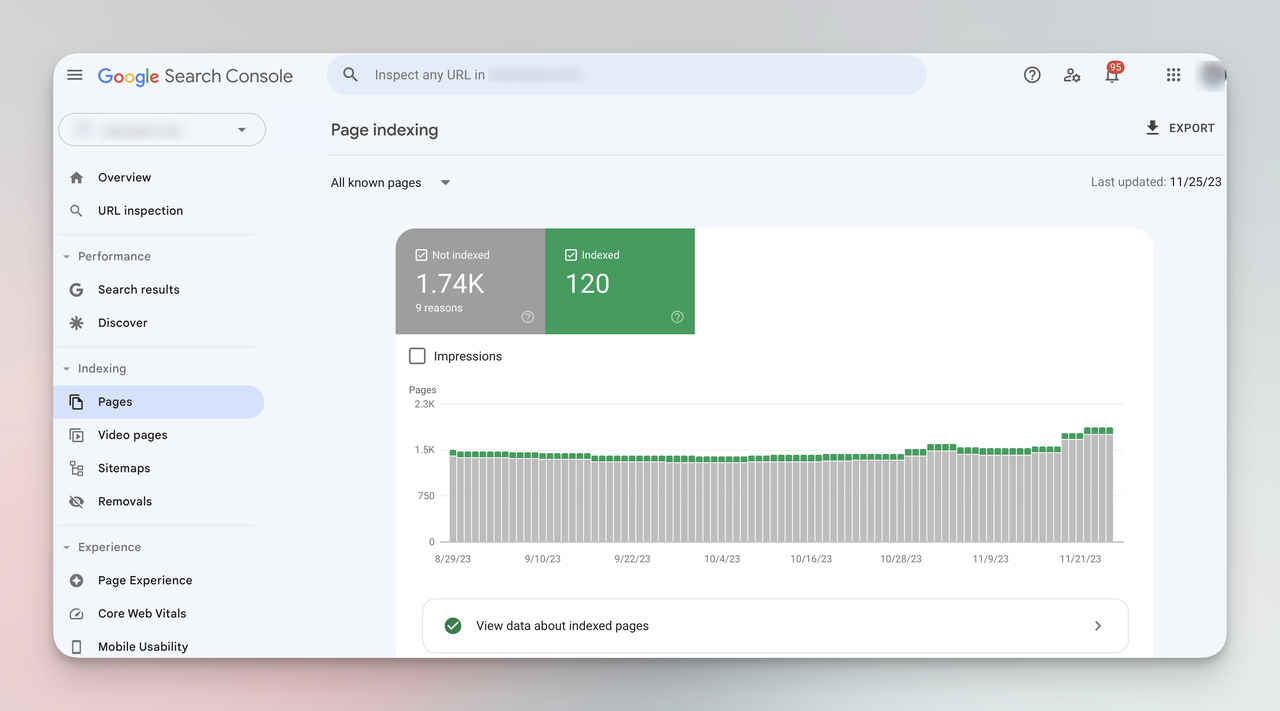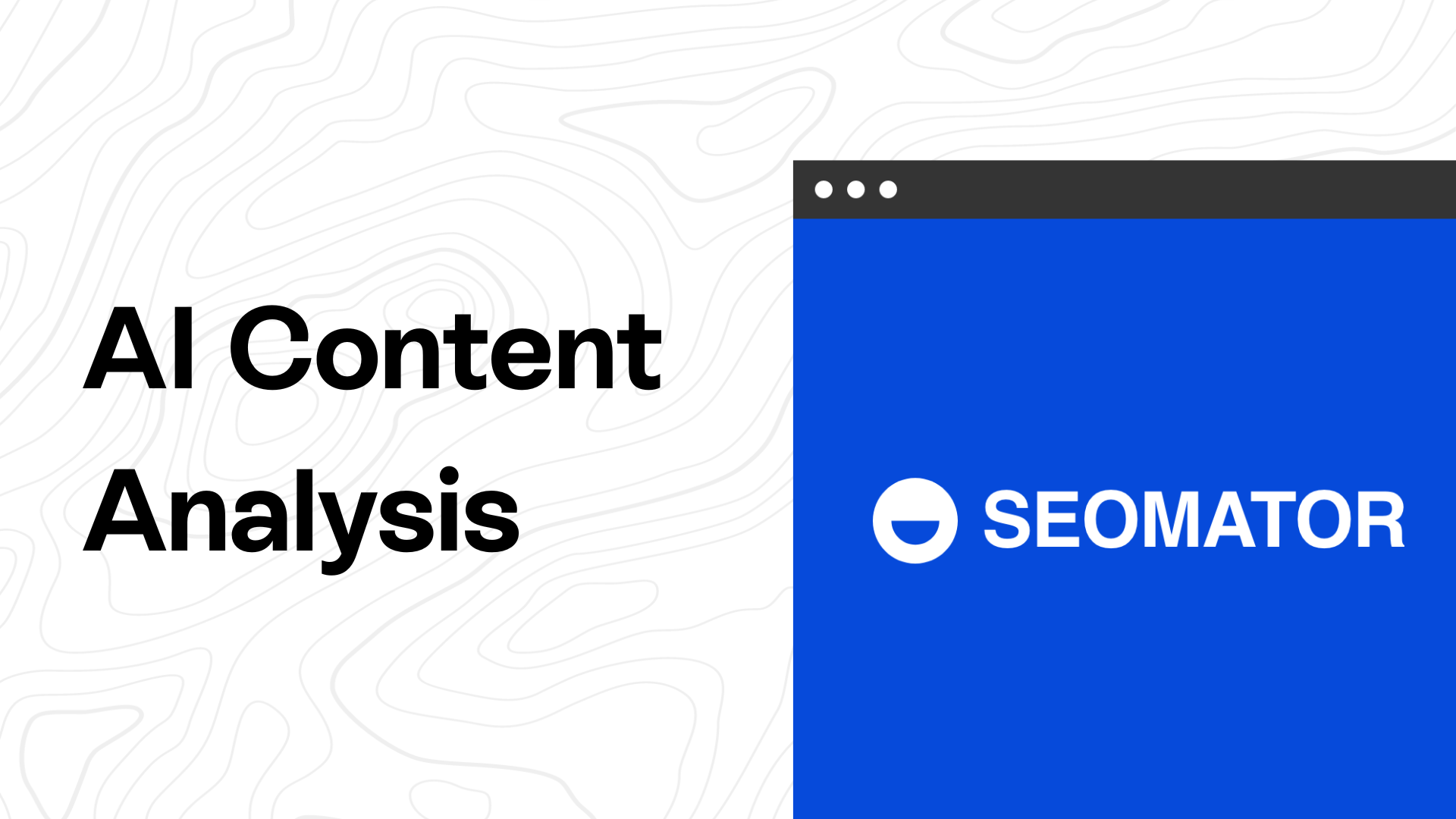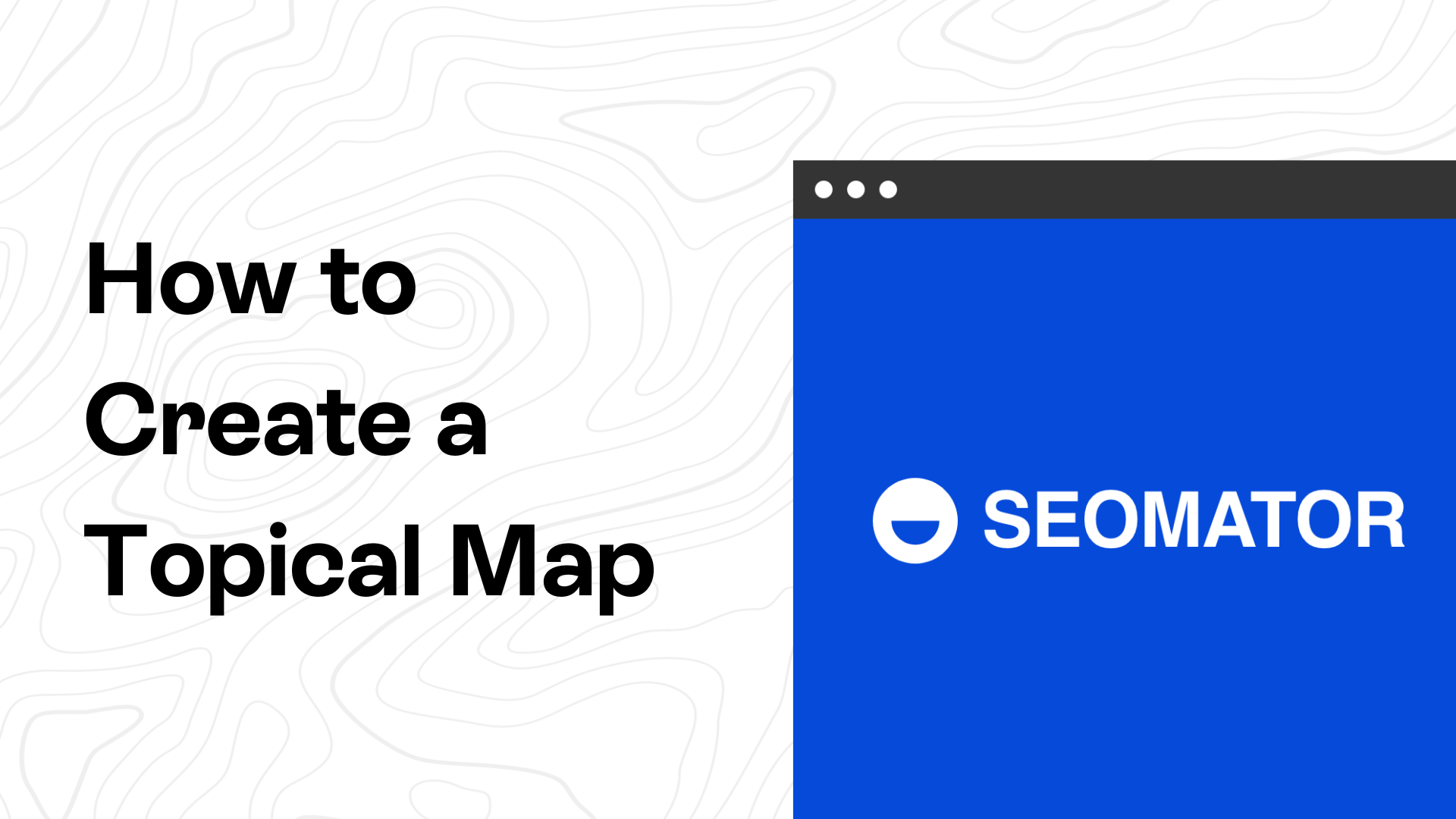
If you're wrestling with this issue, then you have arrived at the appropriate place to equip yourself with knowledge and actionable steps on how to fix 'Crawled - Currently Not Indexed' in Google Console.
In Google's lexicon, when you see the status, 'Crawled - Currently Not Indexed' on your Google Search Console, it indicates that while Google has crawled or visited your page, it has chosen not to include it in its index.
The page is excluded from appearing in search results as Google deems it not valuable enough to rank or finds some technical issues with it.
Think of it as Google rejecting an invitation to your party. Google visited, saw the setup, but decided it's not interesting enough to stay, so it left without adding it to its calendar of exciting events (or in this case, the index of searchable pages).
Importance of Fixing "Crawled - Currently Not Indexed" Issues
Now, you might be wondering - why is this important? Why should I care if some of my pages are not indexed? Isn’t it enough that most of my site is appearing in Google search results?
The fact is, fixing 'Crawled - Currently Not Indexed' issues is more urgent than it may initially seem, especially when these are not just spare, unimportant pages but integral parts of your website. Each 'not indexed' page is a missed opportunity for organic search visibility, potential traffic, and conversions.

Imagine you own a fantastic bookshop containing some rare, valuable books. Unfortunately, some of these books are invisible. Even when customers walk idly down the aisles, they can't see these books, let alone buy them. That’s exactly what happens when your important pages are not indexed - your valuable content becomes invisible.
Furthermore, a high number of ‘Crawled - Currently Not Indexed’ pages may also signal to Google that your website isn’t of high quality, which may potentially impact your overall domain’s ability to rank.
Let's unravel the intricacies of the 'Crawled-Currently Not Indexed' issue together!
You may want to see:
Why Is Your Website Not Showing Up on Google? How to Troubleshoot it?
Understanding “Crawled – Currently Not Indexed”
Let's step into Google's shoes for a moment - envision hundreds of billions of web pages, all begging to be indexed, and only a finite amount of resources to do it. Google's got to be picky.
Only the cream of the web page crop makes it to the index and therefore, into search results. Sometimes, a perfectly good page ends up getting a 'Crawled - Currently Not Indexed' status.
Now that we've briefly stepped into Google's shoes let's further peel off the layers and dive deeper into the realm of 'Crawled - Currently Not Indexed'.

Google's Explanation
According to Google, this status means that they were able to crawl the URL in question, but chose not to index it. It's not that they couldn't index it. It's that they wouldn't. Google decided that, for whatever reason, it wasn't worth indexing.
In terms of understanding SEO implications, it's important to remember that Google is constantly updating its indexing policies.
The 'Crawled - Currently Not Indexed' status isn't an indictment of your SEO efforts. Instead, it's an invitation to improve and optimize your web page so that it meets Google's quality standards.
Reporting Differences
It's worth noting that Google's reporting for not indexed URLs isn't always straightforward. You may have seen variants of this status, like 'Crawled - Currently Not Indexed' or 'Excluded - Not Currently Indexed'. Both indicate the same issue: Google has visited your page but hasn't indexed it.
Be it as it may, these differences may also imply varying degrees of issues to address. For instance, 'Excluded - Not Currently Indexed' might mean that while your page is temporarily dropped from the index due to website updates, Google will eventually crawl it again and may possibly index it.
On the other hand, 'Crawled - Currently Not Indexed' might represent more severe concerns that need immediate attention.
Understanding 'Crawled – Currently Not Indexed' boils down to recognizing that while Google has the capacity to index your web page, it just has made a decision not to. Figuring out why that might be and how to fix it forms the essence of SEO strategies.
As SEO experts or marketers, your task is to interpret these signals, find out the underlying reasons, and then take effective actions promptly.
Fear not! In the upcoming sections, we will dive into the common reasons behind this issue and subsequently explore the strategies to resolve them.

5 Common Reasons for “Crawled – Currently Not Indexed”
Let's keep our journey going and start investigating some usual suspects that might result in the 'Crawled – Currently Not Indexed' status of your webpages. Deducing these reasons can significantly aid you in crafting an effective solution tailored to your unique circumstance.
So, get ready and let’s dig into the root causes of this notorious Google Console alert:
1. Low Domain Rating (DR)
Your site's Domain Rating (DR) represents the strength and reputation of your website's backlink profile. It is a metric that benchmarks your site’s perceived credibility on a 100-point scale, with higher ratings signaling a more authoritative and reliable site.
Google generally prefers to index pages from sites that demonstrate a high value and trustworthiness in the eyes of users.
If your site lacks a substantial number of quality backlinks, or if it's relatively new, search engines might judge it as less credible. Consequently, low DR can often result in 'Crawled - Currently Not Indexed' status.
2. Absence of a Proper Sitemap.xml
A sitemap is essentially a roadmap to your website that leads search engines to all your important pages. It provides a hierarchical list of pages of a website accessible to crawlers or users.
Neglecting a well-crafted, updated sitemap.xml might cause some of your pages to be overlooked during crawling, thereby causing them to be 'Crawled - Currently Not Indexed'.A website without a sitemap is like an uncharted territory - search engines can stumble upon it, but they can't explore it thoroughly and efficiently.
3. Technical SEO Issues
Technical issues can play a massive role in a page being 'non-indexed'. These problems can range from wrong robots.txt configurations, noindex directives, URL parameters that confuse crawlers, to incorrect canonical tags, or slow site speed.
The path to indexing and ranking begins with Google’s ability to find and understand your content. If technical issues are preventing this from happening, you can be sure that they will contribute to the 'Crawled - Currently Not Indexed' status.
🕵🏻♂️ Get a free SEO audit report
4. RSS Feed URLs, Paginated URLs & Expired Products
RSS Feed URLs
RSS feeds help users stay informed by retrieving the latest content from the sites they are interested in. However, these feed URLs do not necessarily provide unique or valuable content to Google's index.
As Google tends to avoid indexing pages without unique content, your RSS feed URLs might contribute to the 'Crawled – Currently Not Indexed' status.
Paginated URLs
Pagination is a technique of dividing web content into several pages. This commonly happens in e-commerce sites where you have multiple pages for product listings. Because these pages carry similar or relatively thin content, Google often refrains from indexing them, causing a 'Crawled – Currently Not Indexed' status.
Expired Products
Similarly, on e-commerce websites, expired product pages often contribute to the 'Crawled - Currently Not Indexed' issue.
Once a product is no longer available, its page typically brings little to no value to the user. Google recognizes this and may choose not to index these pages.
5. Duplicate Content & Thin Content
Lastly, two significant factors contributing to the 'Crawled - Currently Not Indexed' status are duplicate and thin content.
Duplicate Content
Duplicate content issues occur when identical or very similar content appears on multiple URLs.
Whether within a single domain or across multiple domains, duplicate content can confuse search engines about which version to index and rank. As a result, some pages may end up being 'Crawled - Currently Not Indexed'.
Thin Content
Thin content refers to web content that provides little or no value to the user. Google aims to provide users with meaningful, valuable content that answers their queries.
Consequently, pages with thin content often get overlooked in indexing, leading to the 'Crawled - Currently Not Indexed' status.
Understanding these common reasons is your first step towards rectifying the 'Crawled - Currently Not Indexed' status. The good news is, you can address most of these issues by implementing several easy-to-apply strategies.
Next, we will don our troubleshooting hats and venture into the strategies to combat and fix this Google Search Console alert. It's time to reclaim your unseen pages and get them the attention they deserve!
5 Steps to Fix “Crawled – Currently Not Indexed” Issue

Now that we have cracked the code to decode potential reasons behind the 'Crawled - Currently Not Indexed’ status, it’s time to put on our SEO armor and face these issues head-on.
Take note: the following strategies are not merely patches to cover the problem but are proactive measures that will help deliver substantial growth to your website. You are not just fixing issues; you're building a fortress of quality content and sound SEO practices.
Let’s begin our conquest.
01. Improve Site Quality
Our first stepping stone into an SEO-friendly world begins with enhancing the overall quality of your website.
Providing High-Quality Content
A king isn't a king without a crown, and in SEO parlance, Content is the King. The golden rule of SEO is to ensure that your content is unique, engaging, relevant, and adds value to your user base.
Frequently updating your site with fresh content signals to Google that your website is alive and kicking and worth a revisit for indexing. Great content is attractive not only to users but also to Google crawlers.
Strive to provide content that is exceptionally detailed, covers the topic in-depth, and is user-friendly and up-to-date. Your content should align with your audience's search intent and provide them with the answers they seek.
Remember to stick to organic practices and avoid keyword stuffing.
Auditing and Improving Content
Regular content audits are essential to keep your website in good health and ensure consistent user experience. An audit cleanses your site of old, outdated, irrelevant, duplicate, or thin content.
Content revitalization, where you update, repurpose, or remix your old content, can lead to improved rankings and organic traffic.
Remember, refreshing old content and removing low-quality pages could help resolve the 'Crawled - Currently Not Indexed' status.
You may want to read: Content Optimization: The Complete Guide to Boost Rankings
02. Fix Internal Linking Structure
The second step in your SEO strategy should be to have a well-knit, clean, and organized internal linking structure.
Designing a Sound Website Structure
A good site structure helps Google’s spiders to understand the overall layout of your website. There should be a logical pathway leading from one page to another. Every page should be easily reachable, preferably within three clicks from the homepage.
Ensure that you use descriptive anchor texts for internal linking, and that your navigation bar is user-friendly and simple. Your website should be a neatly organized cabinet and not a confusing maze.
Adjusting Crawling and Indexing Initiatives
Make it easier for Google to understand your site hierarchy and crawl your important pages by regularly updating and properly structuring your sitemap.xml. Fix any incorrect noindex directives, robots.txt rules, incorrect canonical tags or URL parameters that confuse search engine bots.
03. Address Duplicate Content
Duplicate content can wreak havoc with your site’s indexing. Google tends to skip over duplicate pages during indexing, leading to potential 'Crawled - Currently Not Indexed' issues.
Whether your website hosts duplicate content unwittingly or for legitimate reasons like printer-friendly versions of pages, it will pose a problem for your site’s indexation.
Creating Unique Elements for The Duplicate Content
A quick remedy for duplicate content is to add rel=canonical tags to the pages you wish to represent as the "main" pages. This tag tells Google that although the content might be identical or very similar, one version of the web page is the preferred one to index.
Moreover, ensure you are not publishing plagiarized, spun, or copied content. Create unique product descriptions for e-commerce websites, even if you are selling similar products.
In case of necessary duplication, such as paginated URLs or printer-friendly versions, consider employing 'noindex' directives. This way, you advise Google not to index these pages.
04. Monitor Index Coverage

A vigilant watch on your index coverage report in Google Search Console can provide valuable insights into how effectively Google is indexing your website pages.
Index coverage monitoring is like constant health check-ups for your website. Regularly spotting and rectifying any 'Crawled - Currently Not Indexed' instances ensures your site remains in Google's good books.
Make prolific use of SEO tools like Google Search Console to regularly track and monitor your index coverage report.
05. Submit a Request to Google For Re-crawling Your URLs
After you have addressed potential issues on your site, you might have to lead Google back to it.
Google offers tools where you can manually submit URLs for crawling. This will prompt Google to visit your page sooner and reevaluate it for indexing. Remember, however, this isn't a magic spell. It doesn't guarantee indexing, but it does nudge Google in the right direction.
In the grand scheme of SEO, this step is like a gentle reminder to Google that you have worked on your party and that it might want to swing by again and reconsider its previous decision.
Case Study: Addressing Duplicate User-generated Content
Imagine a bustling forum site - hundreds of energetic users, multiple threads, questions being asked, queries being answered. It is a dynamic, ever-updating platform of lively interactions.
A fantastic model, isn't it? Until Google's "Crawled - Currently Not Indexed" troubles enter the picture.
User-generated content on forums often results in substantial duplication. Multiple threads discuss the same topic, and similar answers get posted in different parts. Search engines may see these as duplicate content - the primary culprit for the 'Crawled - Currently Not Indexed' status.
So, how does one deal with this tricky situation?
Step 1: Assess the Extent of Duplication
The first step to resolving any problem is understanding its size and depth. Use Google's Search Console Index Coverage report to identify how much of your content is flagged as 'Crawled -Currently Not Indexed'.
Step 2: Declutter and Organize
Next, focus on reducing the duplication of content within your user-generated pages. Implement strategies to merge similar threads and consolidate repetitive answers.
You can also employ forum software features like ‘Similar Threads’ to discourage users from starting duplicate discussions.
Step 3: Leverage Canonicals and Noindex
In forums, some amount of duplication is unavoidable. In such instances, the rel=canonical tag guides search engine bots towards the preferred version of your page suitable for indexing.
At the same time, noindex directives can be used for inherently duplicate or low-quality pages such as profile pages, reply pages, and print-version pages.
These measures help Google’s bots understand and navigate your user-generated content efficiently, thereby reducing 'Crawled - Currently Not Indexed' instances.
Step 4: Foster a Quality User-base
Remember, the quality of user-generated content counts. Encourage your forum members to post unique, high-quality content.
A community guideline promoting original discussions and discouraging thread duplication can go a long way in maintaining the overall quality of your forum.
Step 5: Monitor and Iterate
Lastly, strategizing isn't a one-time procedure. Continuously monitor your index coverage reports, assess the impact of your strategies, and iterate them as necessary.
In digital marketing, cookie-cutter solutions rarely work. Always remember that while the 'Crawled - Currently Not Indexed' issue presents a hurdle, it also invites you to understand your unique circumstance better and devise a tailored plan to address it.
Stay tuned for the final segment of our blog - the conclusion. We promise to wrap up all the wisdom together and present a neat little package of SEO goodness to you.
You may want to read: How to Identify the Cause of Traffic Loss

Conclusion
We have journeyed together through the intricate maze of 'how to fix Crawled - Currently Not Indexed in Google Console' dilemma.
A multitude of issues could land your pages in the 'Crawled - Currently Not Indexed' limbo. On this turbulent voyage, we've met common culprits - a weak domain rating, the absence of a well-structured sitemap.xml, an assortment of technical SEO issues, and the troublesome twins, duplicate and thin content.
Fortified with understanding, we then set sail towards the land of solutions. We discovered the profound impact of elevating site quality by providing high-quality content and regularly auditing it to keep skyward standards.
We stepped ashore on the importance of fixing our internal linking structure and making it easier for the search engine bots to explore our websites and feast on our content.
In the dense jungle of duplicate content, we found the magical artifacts - canonical tags and noindex directives - capable of guiding Google to the pages worthy of indexing.
Crucially, we saw the influence of constant vigilance, of monitoring index coverage and ensuring a keen eye on the health of your site.
And when faced with the task of manually beckoning Google to re-crawl the URLs, we didn't falter. Armed with our knowledge, determination, and readied action plans, we embraced the challenge - underlining an important lesson.
These pearls of SEO wisdom will serve you well in crafting effective pathways for your website - pathways that lead to visibility, organic traffic, and conversions, reaping the ultimate benefits of optimal SEO practices.
Onward and upward, SEO warriors! The world of Google Search is yours to conquer!
You might also want to read:
- Expert Roundup: Free vs Paid SEO Audits
- Understanding Nofollow Links vs. Dofollow Links





